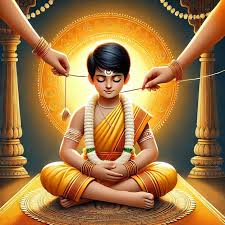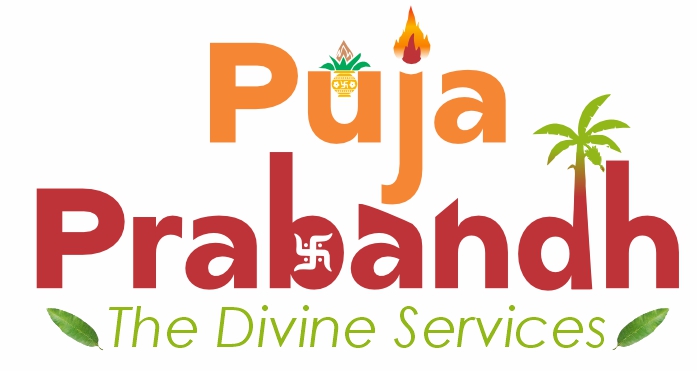
Upanayan (also known as Janeu Sanskar or Sacred Thread Ceremony) is one of the most important Vedic samskaras (rites of passage) in Hindu tradition. It marks the initiation of a young boy (sometimes girls in certain traditions) into the life of spiritual learning, giving him access to the Gayatri Mantra and the path of Brahmacharya (celibate student life).
📜 Meaning of Upanayan
- Upanayan literally means “bringing near” – the student is brought near to the Guru or spiritual knowledge.
- It symbolizes second birth (Dvija) – the birth of knowledge and consciousness.
- The sacred thread (yajnopavita or janeu) represents the three debts:
- To the Gods (Deva Rina)
- To the Sages (Rishi Rina)
- To the Ancestors (Pitra Rina)
📅 When is Upanayan Performed?
- Traditionally between:
- 8–16 years of age for Brahmins
- 11–22 years for Kshatriyas
- 12–24 years for Vaishyas
- Performed on an auspicious day based on astrological charts and family customs.
🔱 Main Rituals in Upanayan Ceremony
- Preparation & Invitation
- House and puja area are cleaned and decorated.
- Relatives and friends are invited to witness the ceremony.
- Ganesh Puja
- Begins with a Ganapati Puja to remove obstacles and seek blessings.
- Sankalp (Resolution)
- The father or guardian takes a vow to perform the Upanayan for his son.
- Mundan (Shaving of Head)
(Optional based on family tradition)
- The child’s hair is tonsured to signify purification and readiness for spiritual life.
- Donning of the Yajnopavita (Sacred Thread)
- The Guru (usually father or priest) gives the janeu (3-stranded sacred thread) to the boy.
- The thread is worn over the left shoulder and under the right arm.
- The three strands represent:
- Purity of thought, word, and deed
- The Trimurti (Brahma, Vishnu, Shiva)
- The three Vedas
- Bhiksha (Alms Round)
- The child symbolically begs for food from his mother and other family members.
- This marks humility and the vow of Brahmacharya (celibate studenthood).
- Gayatri Mantra Initiation
- The child is taught to chant the Gayatri Mantra, considered the most sacred mantra in the Vedas.
- This moment marks the beginning of formal spiritual education.
- Homa / Havan (Sacred Fire Ritual)
- Offerings are made into the fire with Vedic chants for purification and blessings.
- Blessings and Celebration
- Elders bless the initiate and shower him with rice, flowers, or gifts.
- A traditional feast follows, offered to all attendees.
🪔 Symbolism of the Upanayan
- Marks the beginning of formal education (Vedic studies, moral values, self-discipline).
- Instills a sense of duty, responsibility, and humility.
- Represents rebirth into a life of truth and dharma.
🎉 Modern Adaptations
- While traditionally reserved for boys of Brahmin, Kshatriya, and Vaishya varnas, today many families perform Upanayan regardless of caste or gender.
- Some communities now include girls, recognizing the spiritual equality of all.
🌸 Common Mantras & Chants
Gayatri Mantra:
“Om Bhur Bhuvah Swaha,
Tat Savitur Varenyam,
Bhargo Devasya Dhīmahi,
Dhiyo Yo Nah Prachodayāt.”
→ Invokes divine light to enlighten the intellect.

